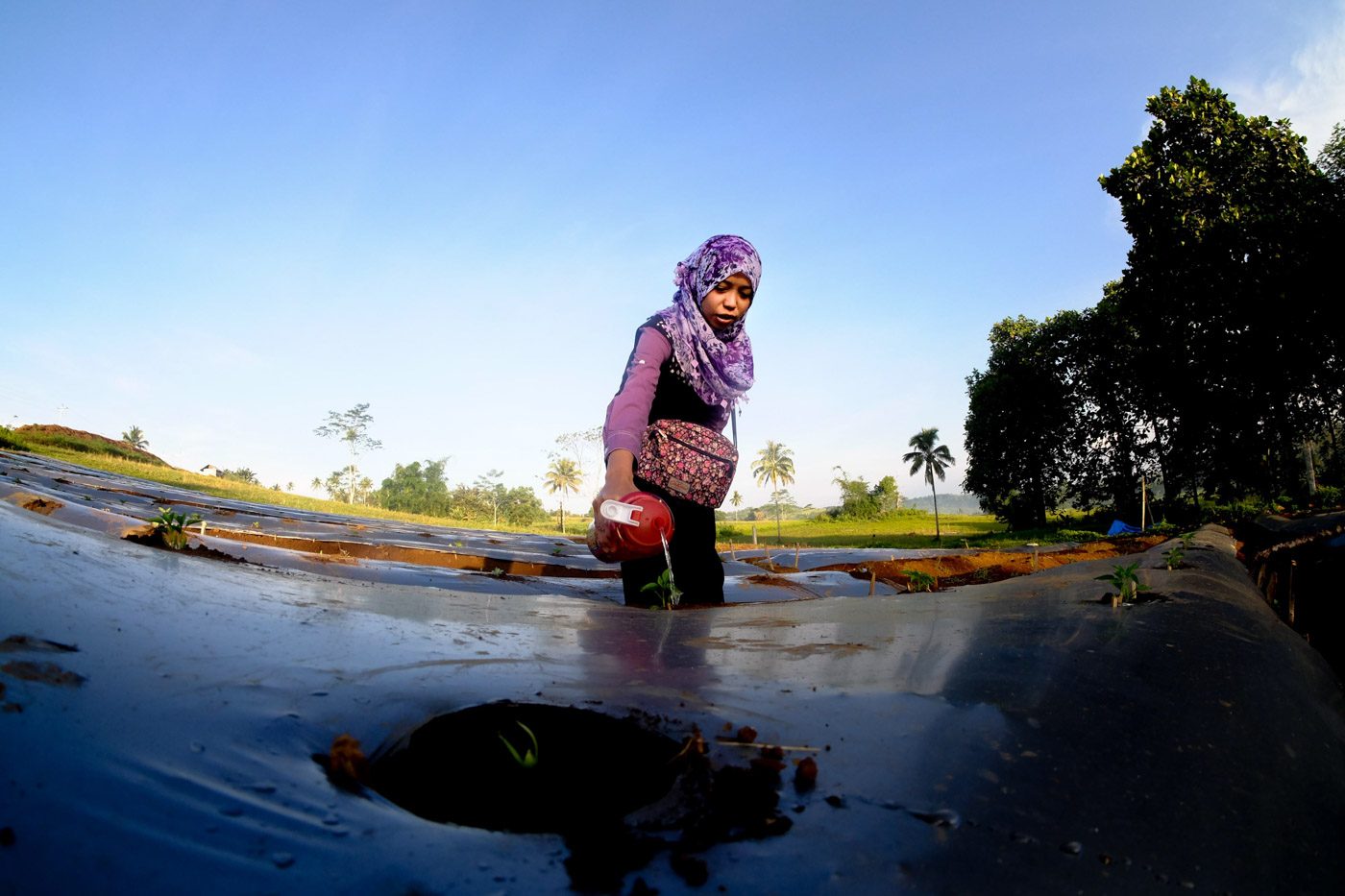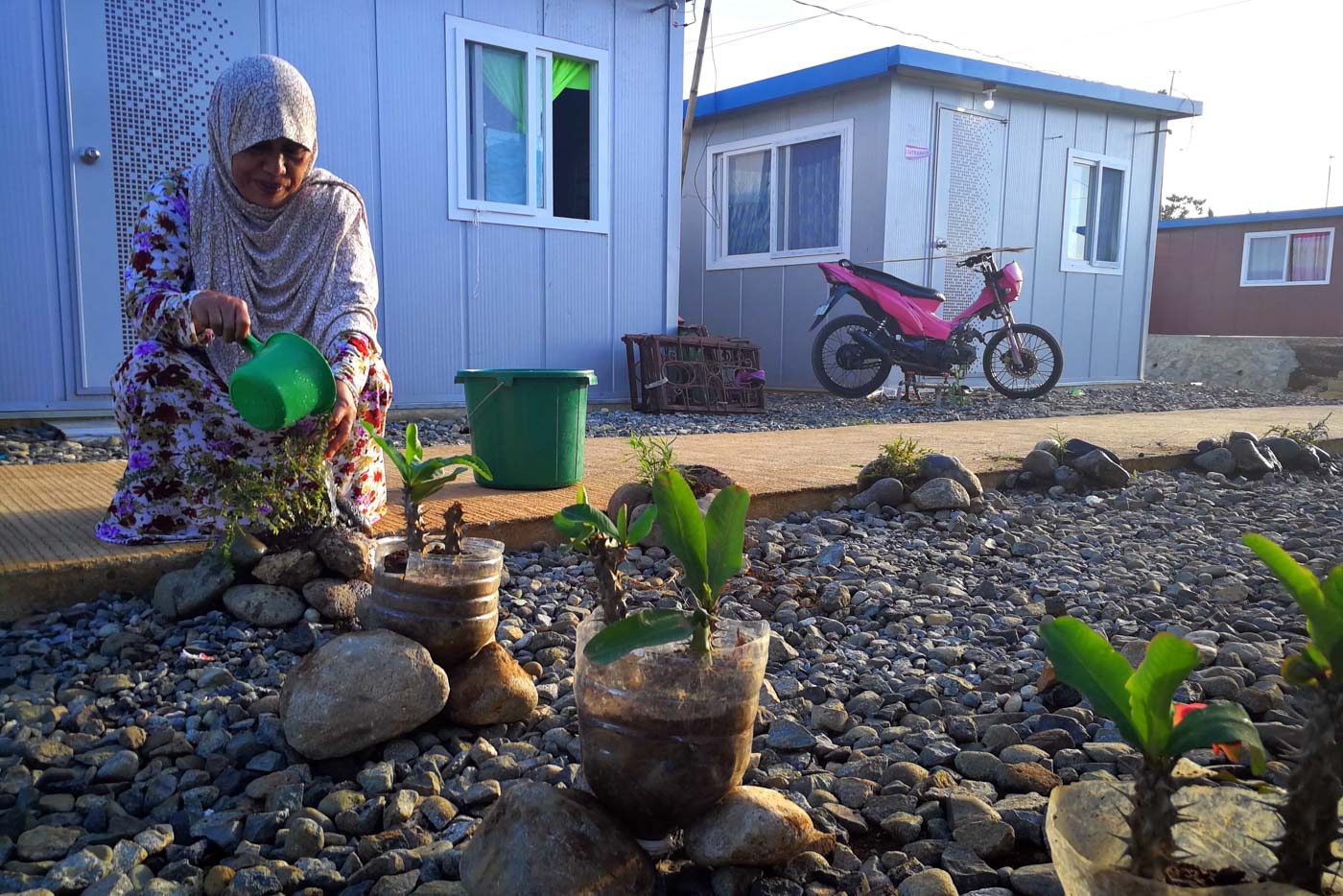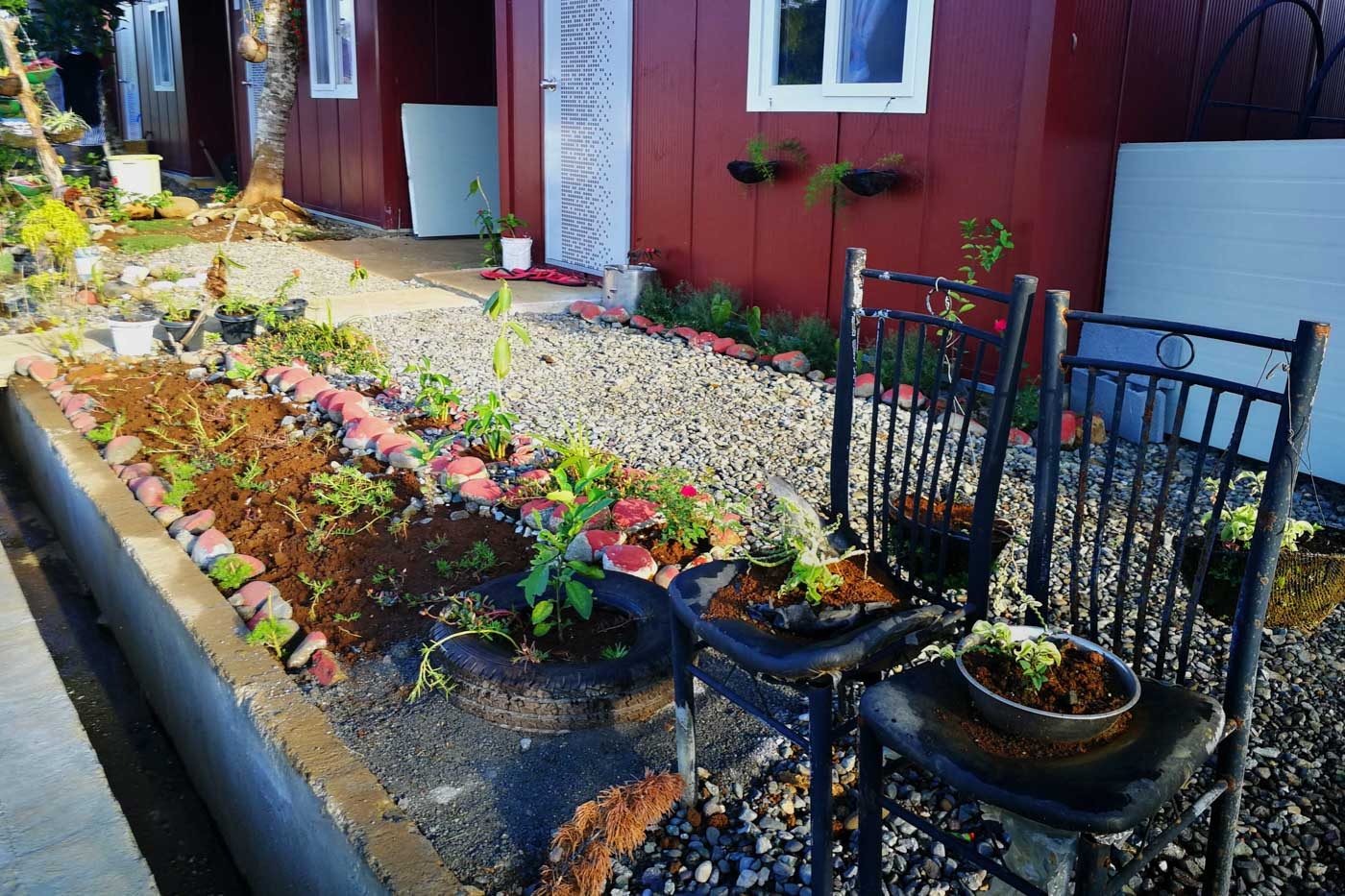SUMMARY
This is AI generated summarization, which may have errors. For context, always refer to the full article.

LANAO DEL SUR, Philippines – Nor-Aine Tantuas and her daughter Wafah woke up earlier than usual, not because it was Ramadan, but because for the past two months, they have been doing something they have never done – gardening.
The Tantuases, along with several other internally displaced families living in Marawi City’s Sagonsongan relocation site, have been tending a garden some 400 meters away from their shelter.
Around 50 garden plots covered in black cellophane can be seen from the road. Each plot is tended by two people, sharing work and possibly the output.
“This is like tending to a newborn child,” Nor-Aine said, as she took care of their 3-feet-by-10-meter garden, where they planted chili.
Her relocation site neighbor, Apipah Balindong, planted tomatoes. She too has no prior knowledge or experience in gardening.
Israel Balindong, on the other hand, has some experience in farming, as he planted corn before the war. Now, he has lost access to his piece of land, but tends a small plot of watermelon.
“This is my first time to plant watermelon, and I’m learning,” Israel said.
That morning, he showed me some leaves of the watermelon being eaten by pests. “I’m at loss, I don’t know what to do to make them stop eating the leaves. But this is better than having to think too much about my house, it is all gone,” Israel said.
‘Something to look forward to’
Marawi City is a concrete jungle of connected buildings. Each building could be as tall as 4 or 5 stories, with family members living on each floor. The Maranaos are a clannish people – there is little space for gardening. This setup serves to keep them close together and for protection. They are also traders by culture, often preferring business as economic activities.
Nor-Aine and Wafah were teachers in a private school inside what is now called the most affected area (MAA) and, like most of the displaced, are jobless.
“This is my first time to do gardening, and I find it relaxing, it takes away my stress, my anguish,” Nor-Aine said.
Apipah also shared that they had no space to plant in their former house. “There is something to look forward to,” Apipah said.

The internally displaced persons (IDPs) were trained by nongovernmental organization Go Negosyo. In their blog, Go Negosyo posted:
“Ginggay Hontiveros-Malvar, Go Negosyo’s Project Head for ARMM Projects and Adviser for Agri-Enterprises reminds everyone of the value of learning over dole-out financial interventions – ‘Here they gain knowledge, education, skill, discipline, capacity to create, and sustainable economic development – all of which can uplift them further than they had ever imagined possible.'”
Lanao del Sur is a rich agricultural land, and while some lands between Marawi and Iligan City are planted with corn and other crops, there are also lands that are not cultivated.
Nor-Aine said that they would prefer to work professionally, while one IDP said that they look at agriculture as for the “poor” – some well-to-do landed families hire outside help to tend their land.
Landscaped relocation site 3

In Sagonsongan relocation site 3, the IDPs have turned what little space they have into a garden.
Rows of houses have planted several ornamentals and root crops. They have outlined their plots with rocks painted with a salvaged red paint, defining the space they have, where they can plant.
Turmeric, ginger, and spring onions were chosen because they are vital ingredients of palapa, a condiment and staple in Maranao homes.
Sairah Tali Dimal is tending her 10 square meter space and she filled it ornamental plants.
“When I do this, it takes away my mind from my home,” Dimal said.
The fertile land makes it easy for the plants to grow, and the developers have worked around the land, leaving existing fruit trees.
Dimal’s neighbors have planted bougainvillea, roses, sweet potatoes, daisies, sunflower, pechay, and others.
On Dimal’s row, Emily Macabando has the biggest space, which she has filled with rows of San Francisco plants. She plans to add some Bermuda grass, and flowering plants too.
They are also learning how to plant using recycled cola bottles to maximize space.
“When I tend to my plants, my mind is focused, it takes away the pain in my heart of losing our homes, in here, I find peace, healing,” Dimal said. – Rappler.com
Add a comment
How does this make you feel?
There are no comments yet. Add your comment to start the conversation.